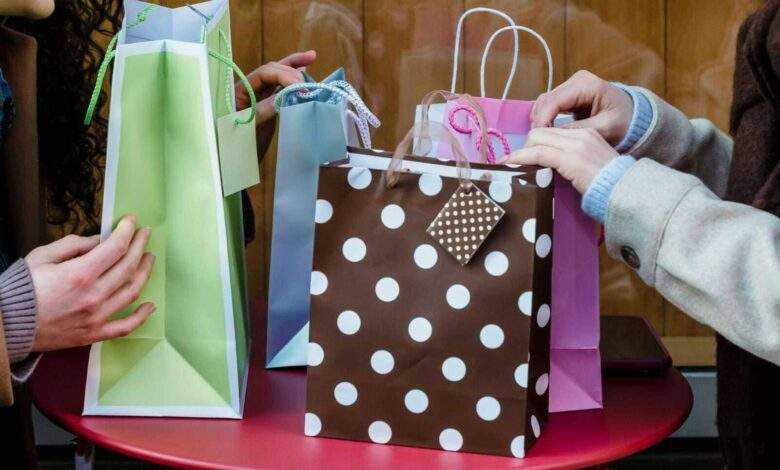DIY Gift Wrap: Creative and Eco-Friendly Alternatives to Wrapping Paper

Rethinking Gift Wrap – A Sustainable & Creative Approach
A. The Environmental Impact of Traditional Wrapping Paper
Traditional wrapping paper significantly contributes to environmental waste, especially during peak gifting seasons like Christmas and birthdays. In the US alone, it’s estimated that around 4.6 million pounds of wrapping paper are used annually, most of which ends up in landfills. Here are some key points to consider:
- Non-Recyclable: Many wrapping papers are laminated with plastic, coated with metallic finishes, or adorned with glitter, making them non-recyclable.
- Single-Use: Traditional wrapping paper is often discarded immediately after gifts are unwrapped, contributing to a throwaway culture.
- Deforestation: The production of wrapping paper involves significant tree harvesting, contributing to deforestation and habitat loss.
Environmental Benefits of Eco-Friendly Alternatives:
- Reduction in Waste: Using reusable or recyclable materials helps cut down on the amount of waste generated.
- Lower Carbon Footprint: Eco-friendly wrapping options often have a lower carbon footprint compared to traditional paper.
- Resource Conservation: Sustainable materials, such as recycled paper or fabric, conserve natural resources.
Online Resources:
- Learn more about the environmental impact of traditional wrapping paper at The World Counts.
- Find eco-friendly alternatives on EcoEnclose.
B. The Power of DIY Gift Wrap
DIY gift wrap offers a unique, personalized approach to gift-giving. Here’s why it’s a great alternative:
- Cost-Effective: DIY options can be more affordable than purchasing store-bought wrapping paper. Many materials can be found at home or repurposed from other items.
- Personalization: Creating your own gift wrap allows you to express your personal style and add a special touch to your gifts.
- Resourcefulness: Using what you already have on hand promotes resourcefulness and creativity.
Online Resources:
- Discover DIY gift wrap ideas on Good Housekeeping.
- Get inspired by creative wrapping techniques on Martha Stewart.
C. A Celebration of Sustainability
Adopting sustainable gift-giving practices aligns with the growing awareness of environmental responsibility in the US. Here’s how DIY eco-friendly wrapping contributes:
- Alignment with Sustainable Practices: Using recycled materials and natural decorations ties into a broader commitment to sustainability.
- Encouraging Mindful Consumption: By choosing eco-friendly options, consumers can encourage mindful consumption and reduce their environmental footprint.
- Promoting Reusability: Sustainable gift wrap often involves materials that can be reused, further reducing waste.
Online Resources:
- Explore sustainable living tips on Treehugger.
- Find ideas for eco-friendly gift wrapping on Etsy.
D. Embarking on Your DIY Journey
Ready to start your DIY gift wrap journey? Here’s how to get inspired and get started:
- Ease and Accessibility: Many DIY gift wrap techniques are simple and can be done with materials you already have at home.
- Creativity Unleashed: Embrace the joy of creating something unique and beautiful for your loved ones.
- Sneak Peek: This guide will explore various materials and techniques, from fabric wrapping to using natural elements, providing step-by-step instructions to help you master the art of DIY gift wrap.
Online Resources:
- Check out beginner DIY projects on DIY Network.
- Find eco-friendly craft ideas on EcoCult.
Exploring a World of Eco-Friendly Materials: Sustainable Inspiration for Your DIY Gift Wrap
A. The Beauty of Fabric
Fabric is a versatile and reusable alternative to traditional wrapping paper. Here are some ideas for using fabric:
- Leftover Fabric Scraps: Utilize leftover fabric scraps from sewing projects or old clothes. Scarves, bandanas, and pillowcases also make excellent wrapping materials.
- Furoshiki: This Japanese wrapping technique uses fabric to create beautiful, reusable wraps. It’s an art form in itself and can be adapted to various gift shapes and sizes.
Furoshiki Step-by-Step:
- Lay the Fabric: Place the fabric flat on a surface.
- Position the Gift: Put the gift in the center.
- Fold and Knot: Bring opposite corners together and tie them in a knot. Repeat with the remaining corners.
Online Resources:
- Learn more about Furoshiki on Japan House LA.
- Explore fabric wrapping ideas on Sustainable Jungle.
B. Giving Paper a Second Life
Upcycling paper materials is a great way to create eco-friendly gift wrap. Here are some creative ideas:
- Newspapers and Magazines: Use colorful pages from newspapers and magazines to wrap gifts.
- Maps and Brown Paper Bags: Old maps and brown paper bags can be transformed into stylish wrapping paper with a rustic touch.
- Decoupage and Collages: Create unique designs by cutting out images and patterns from recycled paper and gluing them onto plain paper.
Online Resources:
- Find decoupage techniques on Mod Podge Rocks.
- Get creative with upcycled paper on Upcycle That.
C. Natural Elements for a Rustic Charm
Using natural materials for gift wrap adds a rustic and eco-friendly charm. Here are some suggestions:
- Brown Paper: Simple brown paper can be decorated with twine, dried flowers, leaves, or pine cones.
- Foraging for Decor: Depending on the season, you can forage for sustainable decorative elements like pine cones in winter, flowers in spring, and leaves in autumn.
Online Resources:
- Explore natural gift wrap ideas on Natural Living Ideas.
- Find seasonal foraging tips on Wild Food UK.
D. Beyond the Basics: Unique and Upcycled Materials
For a truly personalized touch, explore materials beyond traditional wrapping options:
- Old Tea Towels and Cloth Napkins: These can be repurposed as wrapping materials.
- Reusable Shopping Bags: Use fabric shopping bags for larger gifts.
- Cardboard Boxes and Containers: Upcycle sturdy boxes or containers into unique and durable gift packaging.
Online Resources:
- Discover upcycling ideas on Upcycle That.
- Explore creative reuse projects on Recyclebank.
Mastering the Art of DIY Gift Wrap: Techniques and Tutorials
A. Essential Tools and Materials
Gathering the right tools and materials is crucial for successful DIY gift wrapping. Here’s a comprehensive list:
- Scissors: Sharp scissors are essential for cutting fabric and paper.
- Tape: Opt for eco-friendly tape such as paper tape or biodegradable tape.
- Glue: Use non-toxic glue or glue sticks for attaching paper and other lightweight materials.
- Twine and Ribbon: Natural jute twine or fabric ribbon make great alternatives to plastic ribbon.
- Markers and Stamps: Personalize and decorate your DIY gift wrap.
- Recycled Materials: Gather old newspapers, magazines, fabric scraps, and other upcyclable items.
Online Resources:
- Purchase eco-friendly crafting supplies from Earth Hero.
- Find sustainable craft materials on Etsy by searching for “eco-friendly craft supplies.”
B. Gift Wrap Techniques for All Levels
Here are some step-by-step tutorials for various DIY gift wrap techniques:
Basic Fabric Wrapping
- Cut the Fabric: Measure and cut a piece of fabric large enough to cover the gift with some excess for tying.
- Place the Gift: Lay the fabric flat and position the gift in the center.
- Wrap and Tie: Bring opposite corners of the fabric together over the gift and tie them in a knot. Repeat with the other two corners.
Newspaper Gift Wrap
- Select Pages: Choose colorful or interesting pages from old newspapers.
- Wrap the Gift: Use the newspaper just like traditional wrapping paper, securing it with eco-friendly tape or twine.
- Add Decorations: Personalize with stamps, drawings, or cut-out images.
Advanced Techniques
- Furoshiki Variations: Experiment with different Furoshiki knots and folds to create intricate and beautiful wraps. Refer to detailed Furoshiki tutorials on Furoshiki.com.
- Decoupage Wrapping: Follow the decoupage instructions provided in Section II to create unique and artistic wraps.
- Fabric Scrap Gift Bags: Sew small gift bags from fabric scraps. Tutorials can be found on YouTube by searching for “DIY fabric gift bags.”
Online Resources:
- For a variety of DIY gift wrap tutorials, visit Craftsy.
- Explore creative wrapping techniques on Pinterest by searching for “DIY gift wrap.”
C. The Finishing Touches: Personalization and Presentation
Adding personal touches to your DIY gift wrap can make your gifts even more special. Here are some ideas:
- Handmade Tags: Create your own gift tags using recycled paper or fabric scraps. Personalize them with handwritten messages.
- Natural Embellishments: Decorate your wrapped gifts with dried flowers, leaves, cinnamon sticks, or pine cones.
- Creative Presentation: Think outside the box with how you present your gifts. Use baskets, wooden crates, or repurposed containers.
Online Resources:
- Find inspiration for handmade tags on Paper Source.
- Learn about natural embellishments on Country Living.
D. Last-Minute Magic: Quick and Easy DIY Wrap Ideas
For those last-minute gifts, here are some stress-free DIY wrap options:
- Brown Paper Bags: Decorate plain brown paper bags with stamps, drawings, or natural elements like twine and leaves.
- Colorful Tissue Paper: Use layers of tissue paper to wrap small gifts. Tie with a ribbon or twine.
- Repurposing Leftovers: Use leftover materials from other projects, such as fabric scraps or pieces of wrapping paper, to create unique wraps.
Online Resources:
- Find last-minute DIY wrap ideas on Real Simple.
- Explore quick and easy wrapping techniques on YouTube.
Beyond the Wrap: Sustainable Gift-Giving Practices
A. Selecting Eco-Friendly Gifts
Extending sustainability to the gifts themselves is crucial. Here are some eco-friendly gift ideas:
- Experiences: Give the gift of experiences, such as concert tickets, museum memberships, or cooking classes. These create lasting memories without generating waste.
- Locally-Made Products: Support local artisans and businesses by purchasing handmade goods. Look for items made from sustainable materials.
- Recycled and Upcycled Gifts: Opt for products made from recycled or upcycled materials, such as jewelry, home decor, or fashion accessories.
Online Resources:
- Discover eco-friendly gifts on Uncommon Goods.
- Explore locally-made products on Etsy by searching for “locally made gifts.”
B. The Power of Minimalism
Embracing minimalism in gift-giving can lead to more thoughtful and meaningful presents. Here’s how:
- Thoughtful Gifts: Focus on gifts that hold sentimental value or cater to the recipient’s interests and needs.
- Experiences Over Things: Emphasize giving experiences rather than physical items. This could include a homemade meal, a day out, or a workshop.
- Homemade Gifts: Create something unique, such as baked goods, handmade crafts, or a personalized photo album.
Online Resources:
- Learn more about minimalism at Becoming Minimalist.
- Find minimalist gift ideas on The Minimalists.
C. Reusable Gift Bags and Boxes
Reusable gift bags and boxes are excellent sustainable alternatives to disposable wrapping paper. Here are some tips:
- Decorating Reusable Bags: Purchase plain cloth bags and decorate them with fabric paint, stencils, or embroidery.
- Reusable Boxes: Use sturdy boxes that can be reused multiple times. Decorate them to suit different occasions.
- Gift Exchange Culture: Encourage your family and friends to exchange gifts using the same reusable wrapping, creating a tradition of sustainability.
Online Resources:
- Find reusable gift bags on EcoBags.
- Explore reusable packaging options on Package Free Shop.
Inspiration and Resources for the US DIY Crafter: Building Your Eco-Friendly Gift Wrap Journey
A. DIY Gift Wrap Inspiration Gallery
Visual inspiration can spark creativity and help you come up with unique DIY gift wrap ideas. Here’s how to build your own inspiration gallery:
- Photography: Take photos of your own DIY gift wrap projects. Document different techniques, materials, and presentations.
- Online Inspiration: Browse websites and social media platforms for ideas. Create a digital mood board on Pinterest or save images in an inspiration folder.
Online Resources:
- Explore DIY gift wrap ideas on Pinterest.
- Get inspired by eco-friendly projects on Instagram by following hashtags like #DIYGiftWrap and #SustainableGifting.
B. Printable Gift Wrap Templates and Tags
Printable templates and tags can add a professional touch to your DIY gift wrap. Here’s how to use them:
- Templates: Look for printable gift wrap templates online. These can be printed on recycled paper and used to wrap small gifts.
- Tags: Download and print gift tags that you can personalize with handwritten messages. Attach them to your gifts with twine or ribbon.
Online Resources:
- Find printable gift wrap templates on Creative Market.
- Download free printable gift tags from Canva.
C. Online Communities and Tutorials
Joining online communities can provide support, inspiration, and resources for your DIY projects. Here are some places to connect with fellow crafters:
- Websites and Blogs: Follow blogs that focus on sustainable crafting and DIY gift wrap ideas.
- YouTube Channels: Subscribe to channels that offer tutorials and tips for eco-friendly gift wrapping.
- Forums and Groups: Participate in online forums and social media groups dedicated to DIY and sustainable living.
Online Resources:
- Connect with DIY enthusiasts on Craftster.
- Join the discussion on sustainable crafting in the Zero Waste Home community.
Wrap with Love, Wrap with Sustainability
A. The Joy of Creating and Gifting Sustainably
Recap the satisfaction and fulfillment derived from creating eco-friendly and personalized gift wrap. Here are key points to highlight:
- Environmental Impact: Emphasize the positive impact of reducing waste and promoting sustainability through DIY gift wrap.
- Personal Satisfaction: Reflect on the joy and creativity involved in making your own gift wrap and the appreciation from recipients.
Online Resources:
- Learn more about sustainable living on Sustainable Living Guide.
- Discover the benefits of eco-friendly practices on Environmental Protection Agency.
B. Sharing the Inspiration
Encourage US readers to share their DIY gift wrap creations and inspire others:
- Social Media: Post photos of your projects on social media platforms with relevant hashtags.
- Workshops and Parties: Host DIY gift wrap workshops or parties with friends and family to share techniques and ideas.
- Community Involvement: Spread awareness about sustainable gift-giving practices within your community.
Online Resources:
- Share your projects on Instagram using hashtags like #EcoFriendlyGiftWrap and #DIYGiftWrap.
- Find workshop ideas on Eventbrite by searching for “DIY gift wrap workshops.”
C. A Sustainable Future for Gift-Giving
Express optimism for a future of mindful and sustainable gift-giving traditions in the US:
- Mindful Consumerism: Encourage readers to make conscious choices in their gift-giving practices, prioritizing sustainability.
- Creative Expression: Empower US crafters to embrace their creativity and contribute to a more sustainable future.
- Continued Learning: Motivate readers to keep exploring and innovating in their DIY projects.
Online Resources:
- Explore more about conscious consumerism on The Good Trade.
- Learn about sustainable practices on Sustainable America.
Eco-Wrapping FAQs
This FAQ tackles common questions you might have as a US crafter embarking on your DIY eco-friendly gift wrap journey:
1. What are some easy-to-find materials for DIY gift wrap?
Brown paper bags, old newspapers, fabric scraps, scarves, and leftover ribbon are all great options (US)! Get creative with what you already have at home.
2. I’m not crafty, can I still do DIY gift wrap?
Absolutely! Simple techniques like embellishing brown paper bags with natural elements or using colorful tissue paper are quick and impactful.
3. How do I wrap oddly shaped gifts with fabric?
Furoshiki, the Japanese fabric wrapping technique, is perfect for all shapes and sizes! Online tutorials offer step-by-step guidance (US focus).
4. What can I use for gift tags on eco-friendly wrapping?
Repurpose old greeting cards, cut out shapes from cardboard, or even use fabric scraps for unique and personalized tags.
5. Is there a way to reuse gift wrap from received gifts?
Absolutely! Carefully unwrap received gifts and store the paper for future use. You can even upcycle it into gift bags or decorative elements.
6. Where can I find printable gift wrap templates?
This blog offers a downloadable resource pack with templates for various shapes and sizes (check the “Inspiration and Resources” section)! Many websites also offer free printable templates.
7. Are there online communities for DIY gift wrap inspiration?
Yes! Explore Pinterest boards, YouTube channels, and online forums dedicated to sustainable gift wrapping (US focus). You’ll find endless inspiration and tips.
8. How can I make my DIY gift wrap extra special?
Personalize it! Add handwritten messages on tags, use natural elements like dried flowers or cinnamon sticks, or tie the wrap with twine and colorful buttons.
9. What are some eco-friendly gift alternatives to traditional wrapping paper?
Reusable fabric bags, decorative tins, or even potted plants can be beautiful and sustainable gift packaging options (US focus).
10. I forgot a gift bag! Can I still wrap sustainably last-minute?
Yes! Use a colorful scarf or bandana for fabric wrapping, or decorate a brown paper bag with natural elements you find around the house. Resourcefulness is key!








